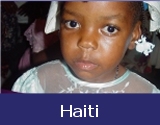 |
Contact usUnited Caribbean TrustUCT Guyana visitGuyana schoolsWomen's NGOsCitizens Initiative
Adopt a family |
home >> caribbean
>> guyana>>
 GUYANA - press release 6th February, 2005 6th February, 2005 The Guyana Citizens Initiative for Flood Relief (GCIFR) wants the authorities, along with non-governmental organisations, to find ways of helping people who are willing to voluntarily evacuate from flood-affected villages, even as the East Demerara Water Conservancy (EDWC) dam remains under threat. GCIFR Coordinator, Major General (Ret'd), Joe Singh yesterday (Saturday) told a regular meeting of governmental and non-governmental stakeholders that many people in villages along the East Coast Demerara are eager to leave because of the increasing threat of water-borne diseases but they have no one to turn to. "Those people out there want us to explain what we are doing about their welfare and some people have made up their minds that they want to move and they need to be engaged," Singh said. The GCIFR has been informed that more than 2,000 people from the East Coast have sought refuge at friends and relatives in the bauxite mining town of Linden. People, he said, are hungry for information about what created the problem and how they can help in finding solutions. Mr Singh urged that a needs assessment be conducted and groups and networks be "treated in a dignified manner, not as refugees but people who are empowered.' The GCIFR has urged President Bharrat Jagdeo to address the nation on the disaster A GCIFR survey team on Saturday found that many people preferred face-to-face discussions, rather than the print and television, about the flood and the emergence of diseases like leptospirosis. President Jagdeo has already scoffed at a call by the Guyana Medical Association (GMA) for people to "vacate" villages that pose a grave health risk, saying that government would entertain the idea of evacuation if the health-professionals make such a recommendation. In addition to being exposed to potentially deadly water-borne diseases, GMA President, Dr Surendra Persaud said many flood-affected people with chronic diseases do not have ready access to medicines and health care could eventually die. With yesterday's height of the EDWC standing at 58.9 GD, heavy rainfall in the area of the conservancy and the likelihood of the rain spreading to other coastal areas, Mr Singh lamented that many decisions are not being made and the focus still seemed to be on the distribution of hampers and water, rather than putting in place "contingency plans." "This problem is not going to go away. The conservancy dam is going to become more and more fragile," the GCIFR Coordinator said. Mr Singh recommended that, as part of an integrated planning system, the villages be identified and rated according to threat level and community groups be identified to filter relief, rather than depend on hampers and cooked food from a centralized distribution point. He said reaching out to flood-affected communities required a "total collective effort" rather than work being done by "distant planners" while people wallow in complacency. "We are now accustomed to seeing people in squalor and filth. We don't see anything wrong with it and they themselves have become complacent," Mr Singh said. Present at yesterday's meeting were residents of flooded communities, senior staff of the University of Guyana, Guyana Red Cross, Indian Arrival Committee (IAC), Chairman of the Guyana Geology and Mines Commission (GGMC), Robeson Benn; geotechnical engineers, veterinarians, businessmen and volunteers. |

 


|
| Copyright © 2022 www.UnitedCaribbean.com. All rights reserved. Disclaimer Click to Contact us |